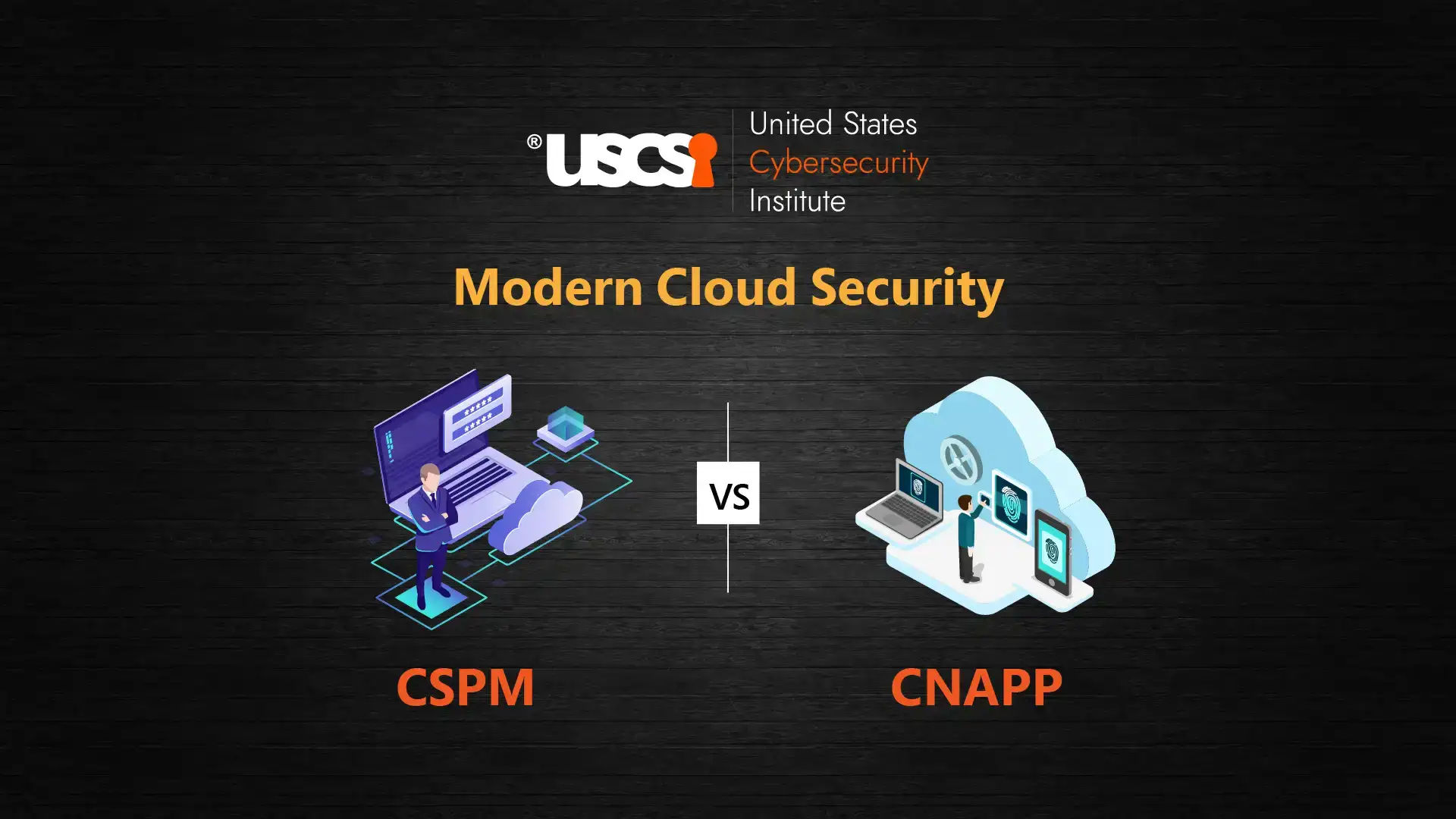

CSPM vs. CNAPP: The Cloud Security Tools Comparison
Cloud adoption rate is at an all-time high now, and so is the need to secure cloud infrastructure and applications it hosts. It is not just the need of the hour for organizations, but also requires advanced cybersecurity tools and strategies as cyberthreats tend to become highly complex and sophisticated.
The two powerful categories of cloud security tools today are Cloud Security Posture Management (CSPM) and Cloud-Native Application Protection Platform (CNAPP). Though CNAPP and CSPM often overlap each other, they serve distinct purposes. So, choosing the right one depends heavily on how mature your cloud is, your risk profile, and the complexity of your architecture.
According to the 2025 State of Cloud Security Report by Orca Security, 55% of organizations now use two or more cloud providers, highlighting a strong trend toward multi-cloud architectures.
What is CSPM?
CSPM is a foundational cloud security tool that is used to properly configure cloud environments and ensure compliance with different standards and regulations. CSPM tools can continuously scan configurations across cloud accounts, look for misconfigurations, and check if there are any policy violations or compliance gaps. For example, CSPM can detect publicly exposed storage buckets, disable encryption, IAM roles with over permissions, etc.
Typically, CSPM can help with:
- Real-time visibility into configurations of resources
- Enforce policy automatically and provide remediation
- Compliance reporting according to industry standards like HIPAA, PCI DSS, GDPR, etc.
In short, CSPM cloud security tools help you manage your cloud posture and ensure the infrastructure is set up correctly and stays secure always.
What is CNAPP?
On the other hand, the CNAPP or Cloud-Native Application Platform is a more comprehensive, robust, and unified security platform. It is designed to secure modern cloud-native environments. Therefore, instead of focusing on just infrastructure configurations, the CNAPP cloud security tools help protect the entire lifecycle of cloud-native applications, right from development (IaC, CI/CD pipelines) to runtime (containers, serverless, VMs), and data.
Let’s explore the core components of CNAPP, which include:
- CSPM – to check misconfigurations and compliance
- CWPP (Cloud Workload Protection Platform) – that protects running workloads like containers and VMs
- CIEM (Cloud Infrastructure Entitlement Management) – used for managing identities, permissions, and least-privilege access
- KSPM (Kubernetes Security Posture Management) – this helps monitor Kubernetes clusters
- DSPM (Data Security Posture Management) – helpful in monitoring sensitive data, its storage, and ensuring proper protection
- IaC and Code Security – an essential component to scan infrastructure-as-code (IaC) templates, application code, and images to identify and eliminate vulnerabilities before deployment
Combinedly, these components enable CNAPP to provide end-to-end visibility and protection for both infrastructure and applications.
Did you know that AI security, cloud security, and data security are among the top priorities for organizations? The following stats from Thales Cloud Security Report highlight this.

What are the Key Differences Between CSPM and CNAPP?
Although CSPM is the building block inside CNAPP, there are some quite differences that cybersecurity professionals must be aware of to make the right choice.

Why Would You Choose One Over the Other?
Before you decide which would be a better choice for you, you must know which cloud security is meant for what. The cloud security industry is evolving with technology. There are numerous tools to secure a cloud environment, and deciding which one your organization actually needs can be a daunting task.
CSPM might be a good choice and will be enough
For organizations that are relatively new in the cloud adoption journey or those who just use basic infrastructure services like VMs, storage, or managed databases, and don’t yet completely rely on containers or other complex microservices. CSPM will enforce proper configurations, reduce risk from drift, and provide clear visibility to compliance.
CSPM cloud security tools are also comparatively less expensive and easier to operate than a full CNAPP security solution. So, it is an ideal choice for teams and small organizations that are looking to build a strong foundation in cloud security without investing heavily in larger platforms.
CNAPP makes more sense for organizations:
- Looking to develop cloud-native apps
- Using continuous delivery (CI/CD) and infrastructure-as-code
- Who needs runtime protection, vulnerability scanning, governance, etc.
- Those who are worried about misconfigurations, lateral attacks, runtime threats, and exploitation
So, organizations that want an overall robust cloud security solution should consider CNAPP, as it integrates the power of CSPM with workload protection as well.
Moreover, by integrating every cloud security tool, including CSPM, CWPP, CIEM, and others into a single platform, CNAPP significantly minimizes alert fatigue, provides clear and actionable risk insights, and makes security operations easier.
Challenges To Implementing Cloud Security Solutions
Implementing cloud security solutions like CNAPP and CSPM comes with a few challenges.
Challenges to Implementing CSPM:
- Different cloud platforms have different configurations and security models. So, a uniform posture management is quite difficult
- CSPM tools generate huge numbers of alerts that lead to noise, and prioritizing tasks becomes challenging
- Moreover, connecting CSPM with existing DevOps, CI/CD, and legacy systems is also a time-consuming and complex process
- Since CSPM focuses mainly on configurations, there can be a gap in real-time threat detection
- Also, CSPM is meant for organizations beginning with a cloud environment, and such organizations may lack skilled cloud security expertise to implement and monitor CSPM tools
Challenges to Implementing CNAPP:
Sentinel One cleverly pointed out that implementing CNAPP isn’t as easy as cutting a cake, and it’s also not a plug-and-play solution. Implementing requires addressing a few challenges, as pointed out here:
- Deployment is complex, as integrating multiple modules requires huge technical expertise
- The upfront cost and licensing for a full CNAPP can also be high
- CNAPP implementation requires high technical expertise, and security teams may need to upskill to handle DevSecOps workflows or runtime threat detection
- Some of the CNAPP modules require agents, which can add to management overhead and may impact performance.
Cloud security challenges continue to grow, with 55% reporting it is more complex than securing on-premises setups, an increase from 51% year over year. (Source: Thales Cloud Security Report 2025)
Despite these few challenges, many consider these trade-offs to be well worth it. With cloud environments becoming dynamic, the overall protection CNAPP provides can help organizations stay protected without any downtime.
What Do Organizations Need to Do?
The best strategic approach is to start with CSPM and then evolve further to CNAPP. Organizations must aim to first efficiently implement standalone CSPM cloud security solutions. After their cloud environment is fully mature, like having working containerized workloads, IaC, or DevSecOps pipelines, they can move ahead to implementing CNAPP.
This step-by-step approach to adopting the most powerful cloud security tools is directly aligned to cloud maturity, where CSPM gives a strong foundation and CNAPP builds on top of it. Combined together, they deliver robust security and protection for infrastructure, code, identity, and runtime.
Enhancing Your Cloud Security Efforts
To sum up, CNAPP and CSPM both have an important role to play in strengthening an organization’s cloud security. However, their approach and purpose are different. Organizations that are starting with a cloud environment can consider working with CSPM first and building a strong cloud footprint. Then, they can move forward with CNAPP when they have a fully-fledged, adopted cloud environment.
As highlighted, implementing cloud security solutions can be expensive and complex, and requires high technical expertise. Professionals who want to upskill themselves with cloud security can find excellent resources and credentials with USCSI®. The cybersecurity certifications explore cloud security in detail, highlight essential tools and technologies, and empower professionals with the skills required to identify opportunities, design solutions, and implement security strategies to boost their cloud security. Check your eligibility for credible and recognized USCSI® certifications here -




